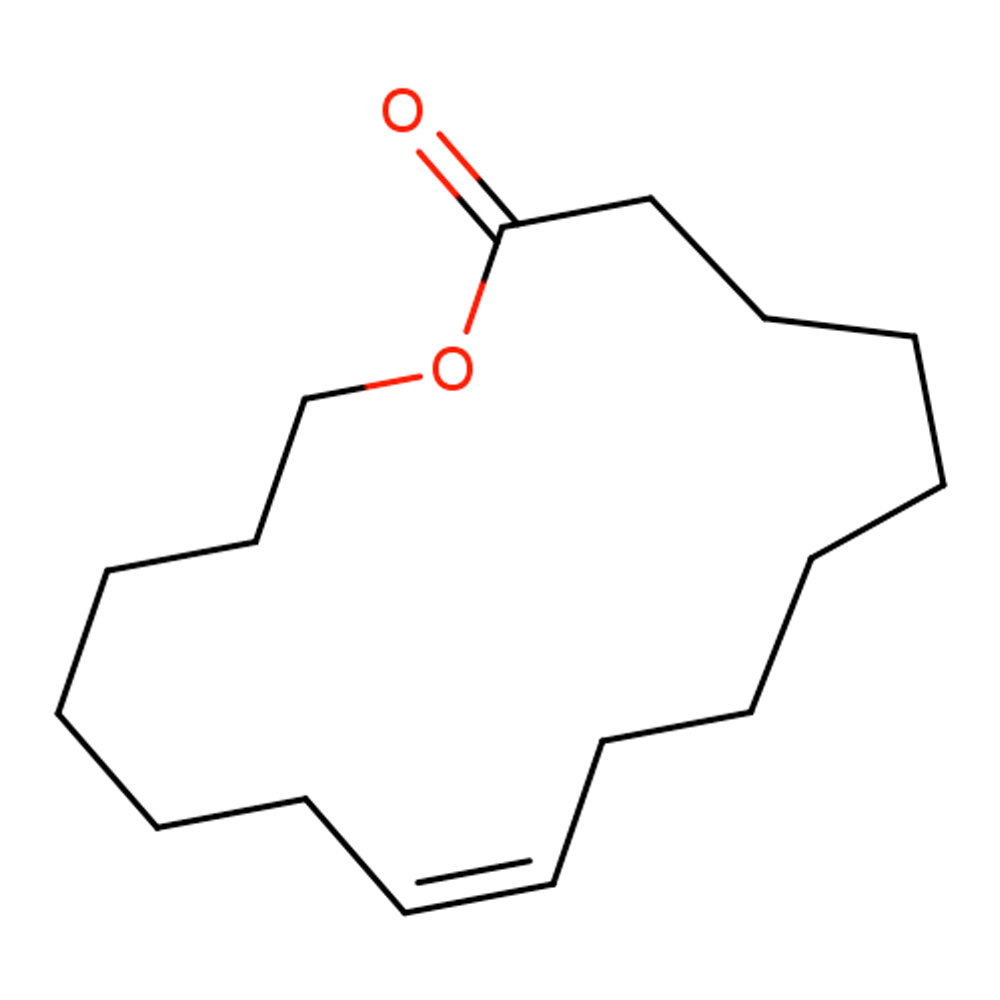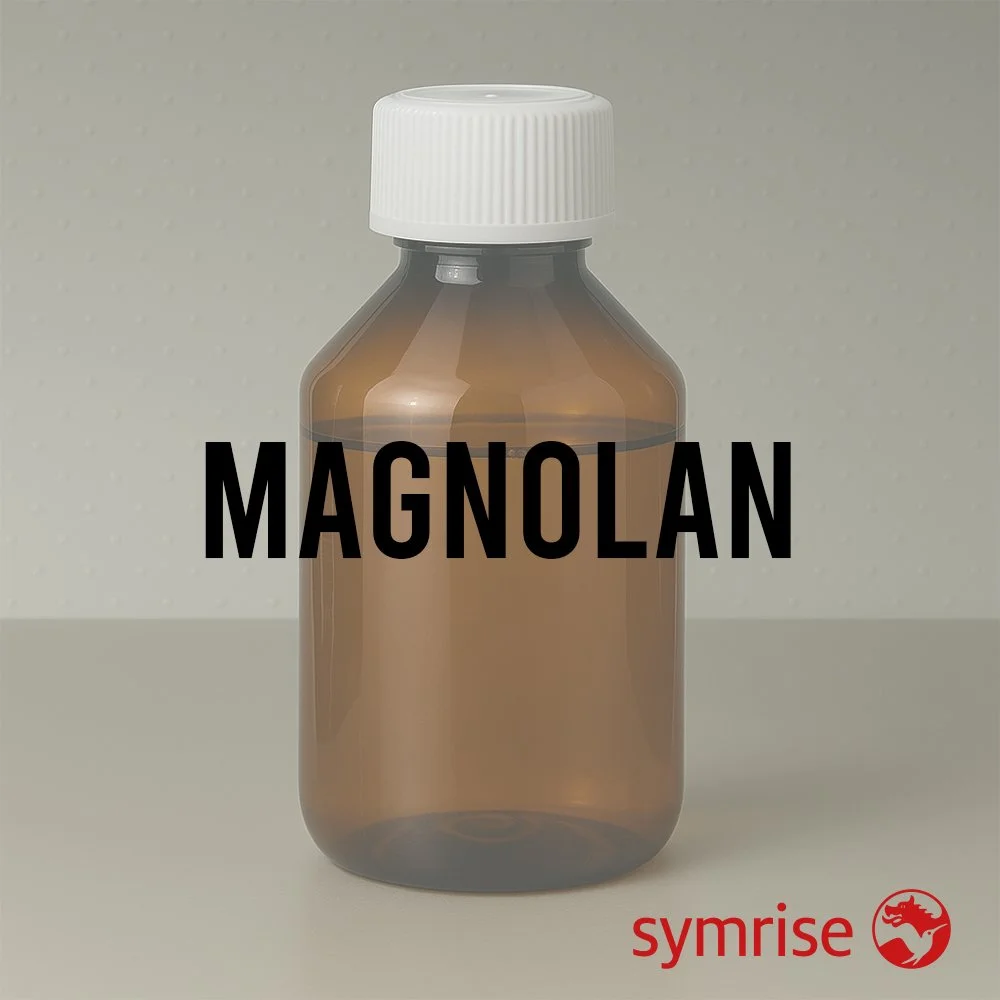TECHNICAL INGREDIENT OVERVIEW
🔎 Chemical Name — Hexyl 2-hydroxybenzoate
🧪 Synonyms — n-Hexyl salicylate; Hexyl o-hydroxybenzoate; Benzoic acid, 2-hydroxy-, hexyl ester; 1-Hexyl salicylate; Salicylic acid, hexyl ester
📂 CAS Number — 6259-76-3
⚖️ Molecular Weight — 222.28 g/mol (PubChem, n.d.)
📝 Odor Type — Floral, green, herbaceous, balsamic
📈 Odor Strength — Mild to moderate
👃🏼 Odor Profile — Very faint, sweet-herbaceous and floral odor with dry bark-like green undertones, sometimes referred to as 'witch-hazel-odor'; reminiscent of azaleas with fresh leafy, fruity nuances; pure grades exhibit a definitely floral odor while poorer grades may show phenolic or ink-like off-notes (Arctander, 1969; Bauer et al., 2001)
⚗️ Uses — Modifier and fixative in floral, fougère, green, chypre, carnation, hyacinth, jasmine, orchid, and herbal accords; functional fragrance applications including soaps, detergents, fabric softeners, air fresheners, and personal care products; excellent alkaline stability makes it suitable for household cleaning products (Arctander, 1969; Symrise, 2021)
🧴 Appearance — Colorless to pale yellow oily liquid (Bauer et al., 2001)
What is Hexyl Salicylate?
Hexyl Salicylate is a synthetic salicylate ester belonging to the aromatic ester chemical family, specifically classified as a hydroxy-substituted benzoate derivative (Api et al., 2015). Structurally, it consists of salicylic acid (2-hydroxybenzoic acid) esterified with 1-hexanol, resulting in the molecular formula C₁₃H₁₈O₃ (PubChem, n.d.). As a member of the salicylate family, it shares chemical kinship with other perfumery materials such as methyl salicylate, benzyl salicylate, and isoamyl salicylate, though each exhibits distinct olfactory characteristics and performance properties.
This colorless to pale yellow liquid is characterized by moderate volatility and exceptional substantivity, making it valuable both as an olfactory modifier and as a fixative in fragrance compositions (Bauer et al., 2001). Unlike the medicinal-narcotic character of methyl salicylate or the heavy balsamic profile of benzyl salicylate, hexyl salicylate presents a softer, greener tonality with fresh floral and herbaceous facets (Arctander, 1969).
The compound is produced entirely through synthetic means via Fischer esterification, though trace amounts have been reported in natural vanilla (Vanilla planifolia) pods and carnation flower absolute (Dianthus caryophyllus) (Bauer et al., 2001; PubChem, n.d.). Its primary role in perfumery is not as a dominant note but rather as a blending agent that harmonizes disparate components within complex formulations while contributing subtle green-floral nuances and extending fragrance longevity.
Historical Background
The commercial development of salicylate esters as fragrance materials emerged in the early 20th century as perfumers sought durable, cost-effective alternatives to expensive natural extracts (Sell, 2006). While methyl salicylate had been known since the 19th century through extraction from wintergreen (Gaultheria procumbens), and benzyl salicylate gained prominence in the early 1900s, hexyl salicylate represents a later addition to the salicylate family.
Hexyl salicylate was first synthesized and commercialized during the mid-1950s, a period characterized by rapid expansion in synthetic aroma chemistry following post-World War II industrial growth (Arctander, 1969). The material was comprehensively documented by Steffen Arctander in his seminal work Perfume and Flavor Chemicals (1969), where he described its "very faint, sweet-herbaceous and floral odor with dry bark-like green undertones" and noted that improved distillation techniques had overcome earlier quality issues that produced phenolic off-notes in impure grades (Arctander, 1969, p. 139).
The development of hexyl salicylate filled a specific niche in perfumery: perfumers required a salicylate with softer, greener characteristics than the existing isoamyl salicylate, combined with excellent tenacity and alkaline stability for functional fragrance applications (Arctander, 1969). Its introduction coincided with the expanding market for detergent and soap perfumery, where materials needed to withstand harsh chemical environments while maintaining olfactory performance.
Throughout the latter half of the 20th century, hexyl salicylate became established as a reliable workhorse ingredient, particularly valued in European perfumery houses for its ability to act as a harmonizing agent in floral and fougère compositions (Symrise, 2021). Contemporary fragrance houses including Givaudan, Symrise, and IFF continue to manufacture and supply hexyl salicylate, maintaining its status as a core ingredient in both fine and functional fragrance portfolios.
Olfactory Profile
Scent Family: Floral-green with herbaceous-balsamic undertones; classified within the salicylate chemical family (Arctander, 1969)
Main Descriptors:
Primary facets: Sweet-herbaceous, fresh-floral, green, leafy
Secondary characteristics: Dry bark-like, witch-hazel-like, slightly balsamic, azalea-reminiscent. Fruity undertones, faintly spicy-medicinal (in dilution)
Quality considerations: Pure grades exhibit clean floral character; lower-purity materials may display phenolic, ink-like, or metallic off-notes from residual free phenolate or incomplete esterification (Arctander, 1969)
Intensity: Mild to moderate diffusion; the odor impact is subtle compared to more volatile salicylates like methyl salicylate, requiring careful evaluation and often revealing its full character only when blended with more volatile components (Arctander, 1969; Givaudan, n.d.)
Tenacity: Very high substantivity with exceptional longevity; detectable for weeks on perfume blotters; exhibits strong blooming effect on both damp and dry textiles, making it particularly effective in laundry applications (Givaudan, n.d.)
Volatility: Low volatility with boiling point approximately 290°C and vapor pressure <0.001 mm Hg at 20°C; functions as a base note to mid-note material with fixative properties that extend the life of more volatile top note components (Lapczynski et al., 2007; Bauer et al., 2001)
Fixative Role: Serves dual function as both an olfactory modifier and technical fixative; binds volatile aromatics while contributing its own characteristic green-floral signature; particularly effective at stabilizing citrus, green, and floral top notes in compositions destined for alkaline media such as soaps and detergents (Arctander, 1969; Symrise, 2021)
Applications in Fine Fragrance
Hexyl salicylate occupies a specialized role in fine fragrance composition, valued primarily as a blending agent and modifier rather than as a dominant accord component. Arctander (1969) noted that while not a direct substitute for isoamyl salicylate, hexyl salicylate possesses similar harmonizing characteristics that help disparate fragrance elements work cohesively.
Primary fragrance applications include:
Floral accords: Enhances fresh-floral character in carnation, hyacinth, orchid (particularly Asian sambac-type jasmine), azalea, and muguet compositions; provides lifting green facets to white floral bases (Arctander, 1969)
Fougère compositions: Contributes herbaceous-aromatic character while reinforcing lavender and rosemary notes; blends effectively with coumarin and labdanum (Arctander, 1969)
Chypre structures: Adds dry-green undertones and fixative support in oakmoss-salicylate frameworks
Green accords: Provides natural-feeling leafy nuances in galbanum, violet leaf, and herbal-green compositions
Marine and aquatic fragrances: Contributes subtle fresh-floral lift with excellent longevity
The material pairs exceptionally well with other salicylates (benzyl salicylate, isoamyl salicylate), ionones (particularly alpha- and gamma-isomers), woody materials (vetiver, sandalwood derivatives), and lactonic floralizers (Arctander, 1969; Givaudan, n.d.). Typical use levels in fine fragrance range from 0.5% to 6.5% depending on regulatory limits and desired olfactory effect.
Performance in Formula
Hexyl salicylate demonstrates outstanding technical performance characteristics that extend beyond its olfactory contributions:
Chemical stability: Exhibits excellent hydrolytic stability across a broad pH range, though particularly resilient in alkaline conditions; maintains olfactory integrity in detergent bases, soap formulations, and fabric care systems where many fragrance materials degrade rapidly (Symrise, 2021)
Blending behavior: Functions as an effective harmonizing agent, smoothing rough transitions between disparate olfactory families; reduces harshness in synthetic floral bases and aldehydic structures; enhances natural feeling in reconstructed floral accords (Arctander, 1969)
Substantivity: Shows remarkable affinity for textiles and skin surfaces; provides long-lasting fragrance effect in rinse-off applications; exhibits strong blooming during drying/wearing phases (Givaudan, n.d.)
Solubility: Water solubility approximately 6.084 mg/L at 25°C; readily miscible with ethanol, dipropylene glycol, isopropyl myristate, and other common perfumery solvents; log KOW (calculated) = 5.06 indicates significant lipophilicity (Lapczynski et al., 2007)
Industrial & Technical Uses
Beyond fine fragrance, hexyl salicylate serves critical functions in functional perfumery and technical applications:
Household care products: Laundry liquids, fabric softeners, dishwashing detergents, hard surface cleaners—valued for alkaline stability and ability to mask harsh chemical bases (Symrise, 2021)
Personal care formulations: Deodorants, antiperspirants, shampoos, body washes, hand soaps—provides fresh-floral character with extended wear (Bauer et al., 2001)
Air care systems: Room sprays, automatic dispensers, gel air fresheners—contributes tenacious fragrance delivery
Cosmetic applications: Limited use as fragrance component in leave-on cosmetics, subject to strict IFRA concentration limits due to sensitization potential (IFRA, 2020)
Analytical standards: Employed as reference standard and internal standard in gas chromatography-mass spectrometry (GC-MS) analysis for fragrance allergen detection and wastewater treatment plant monitoring (Sigma-Aldrich, n.d.)
Regulatory & Safety Overview
IFRA Status: Restricted material under IFRA Amendment 49 (2020, implementation 2021-2022) and maintained under Amendment 51 (2023). Restrictions are based on dermal sensitization and systemic toxicity concerns (IFRA, 2020).
Maximum Acceptable Concentrations (percentage in finished product):
Category 1 (lip products): 0.092%
Category 2 (deodorant/antiperspirant): 0.80%
Category 3 (eye area): 0.25%
Category 4 (fine fragrance): 6.5%
Category 5A (body creams, leave-on face products): 2.7%
Category 5B (face creams): 0.30%
Category 6 (oral care): 0.0092%
Categories 7-12: Variable limits from 0.10% to 64% depending on application
Note: These concentrations represent limits in the finished consumer product, not in the fragrance concentrate itself(IFRA, 2020).
IFRA Official Standard: Available at https://ifrafragrance.org/standards/IFRA_STD_042.pdf
EU Cosmetics Regulation (EC) No 1223/2009: Hexyl salicylate is subject to specific restrictions. The Scientific Committee on Consumer Safety (SCCS) issued Opinion SCCS/1658/23 (2024) confirming safety at specified maximum concentrations, with additional restrictions for children under 3 years of age (maximum 0.1% w/w in products like shower gel, shampoo, body lotion) (SCCS, 2024). The material has been classified as CMR Category 2 (suspected reproductive toxin) under CLP Regulation (EC) No 1272/2008, Annex VI.
FEMA Status: Not assigned FEMA GRAS status; hexyl salicylate does not appear in the FEMA flavor ingredient database as of 2025, unlike related salicylates such as methyl salicylate (FEMA 2745), isoamyl salicylate (FEMA 2084), and benzyl salicylate (FEMA 2151).
Toxicology (brief summary from RIFM assessment):
Acute oral LD₅₀ (rats): >5.0 g/kg (1/10 deaths at 5.0 g/kg; transient urinary incontinence observed)
Acute dermal LD₅₀ (rabbits): >5.0 g/kg (0/10 deaths)
Skin sensitization: Classified as Category 1 skin sensitizer; demonstrated sensitization potential at 5% concentration in animal studies
Dermal irritation: Not typically irritating when used as fragrance ingredient below 3% concentration; neat application caused irritation in animal testing
Systemic effects: Metabolizes to salicylic acid in vivo; shares metabolic pathway with other salicylates
Environmental profile: Very toxic to aquatic organisms with long-lasting effects; persistent in aquatic systems; must be handled as hazardous waste (Lapczynski et al., 2007; ECHA, n.d.)
REACH Registration: Registered under EC Number 228-408-6; included in ECHA substance evaluation (CoRAP) and various EU construction and chemical agent directives due to hazard classification (ECHA, n.d.)
References
Api, A. M., Belsito, D., Bruze, M., Cadby, P., Calow, P., Dagli, M. L., ... & Wilcox, D. K. (2015). Criteria for the Research Institute for Fragrance Materials, Inc. (RIFM) safety evaluation process for fragrance ingredients. Food and Chemical Toxicology, 82(Suppl.), S1-S19. http://fragrancematerialsafetyresource.elsevier.com/sites/default/files/Criteria_Document_Final.pdf
Arctander, S. (1969). Perfume and flavor chemicals (aroma chemicals) (Vols. I-II). Montclair, NJ: Author.
Bauer, K., Garbe, D., & Surburg, H. (2001). Common fragrance and flavor materials: Preparation, properties and uses(4th ed.). Weinheim, Germany: Wiley-VCH.
European Chemicals Agency (ECHA). (n.d.). Substance information: Hexyl salicylate (CAS 6259-76-3). Retrieved October 10, 2025, from https://www.echa.europa.eu/substance-information/-/substanceinfo/100.025.826
European Commission, Scientific Committee on Consumer Safety (SCCS). (2024). Scientific opinion on hexyl salicylate (SCCS/1658/23; CAS/EC No. 6259-76-3/228-408-6). Brussels: Directorate-General for Health and Food Safety.
Givaudan. (n.d.). Hexyl salicylate – Ingredient technical sheet. Vernier, Switzerland: Author.
International Fragrance Association (IFRA). (2020). IFRA standard: Hexyl salicylate (Amendment 49). Geneva, Switzerland: Author. https://ifrafragrance.org/standards/IFRA_STD_042.pdf
Lapczynski, A., Jones, L., McGinty, D., Bhatia, S. P., Letizia, C. S., & Api, A. M. (2007). Fragrance material review on hexyl salicylate. Food and Chemical Toxicology, 45(Suppl. 1), S401-S407. https://doi.org/10.1016/j.fct.2007.09.064
PubChem. (n.d.). Hexyl salicylate (Compound Summary for CID 22629). National Center for Biotechnology Information. Retrieved October 10, 2025, from https://pubchem.ncbi.nlm.nih.gov/compound/Hexyl-Salicylate
Sell, C. S. (2006). The chemistry of fragrances: From perfumer to consumer (2nd ed.). Cambridge, UK: Royal Society of Chemistry.
Sigma-Aldrich. (n.d.). Hexyl salicylate analytical standard (Product No. 84280). St. Louis, MO: MilliporeSigma. Retrieved October 10, 2025, from https://www.sigmaaldrich.com/US/en/product/aldrich/84280
Symrise. (2021). Hexyl salicylate – Product data sheet. Holzminden, Germany: Author.













